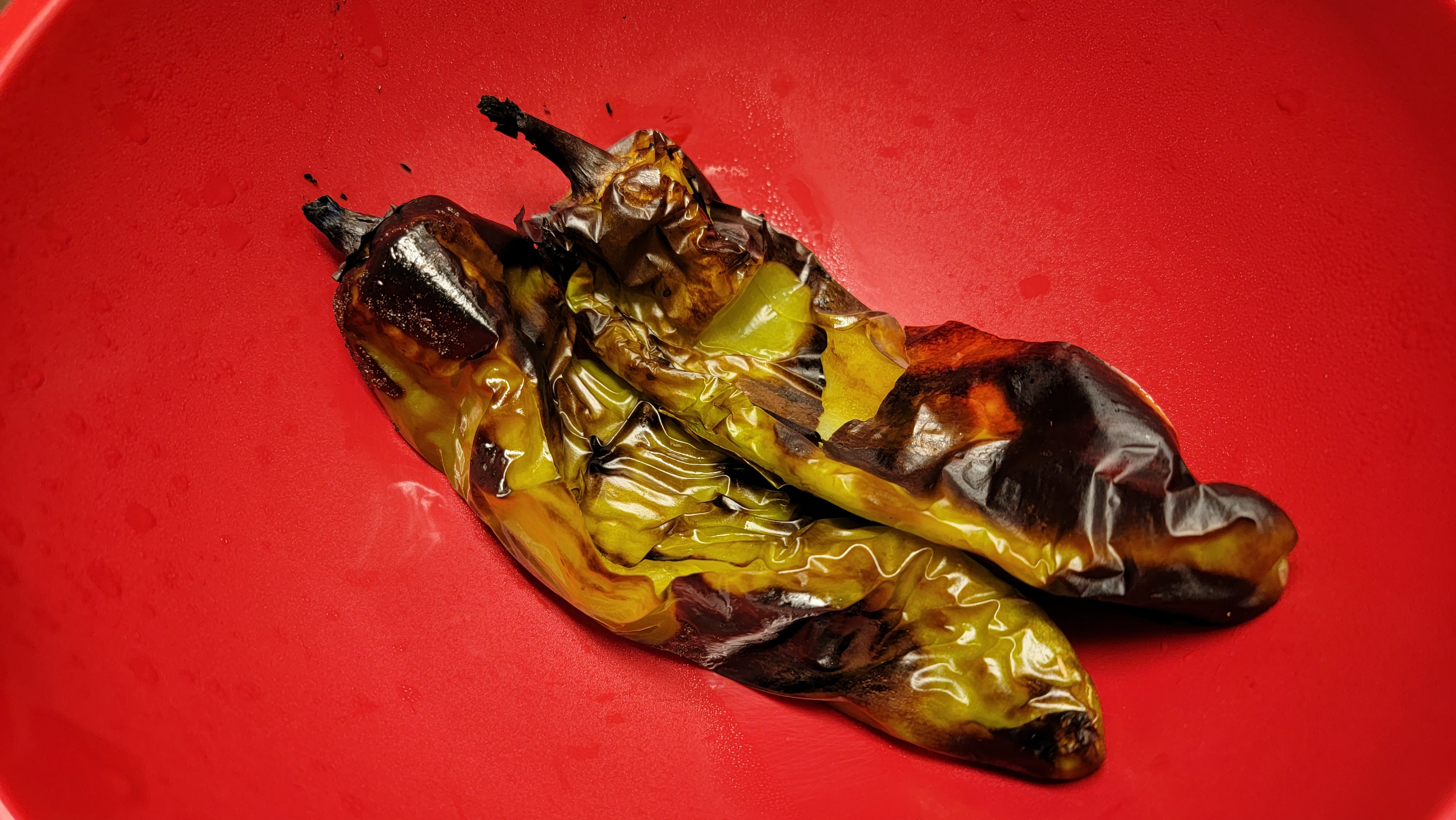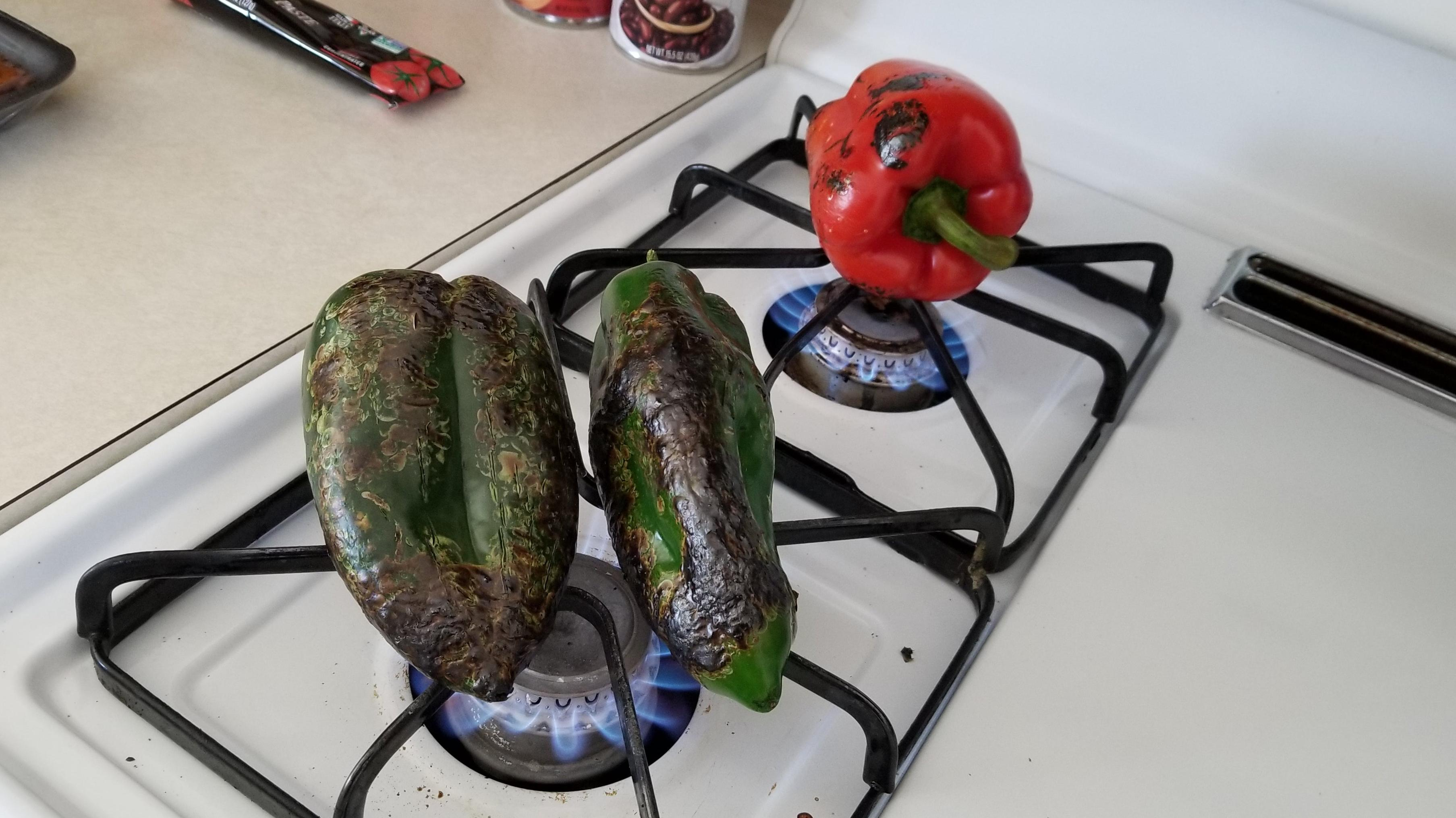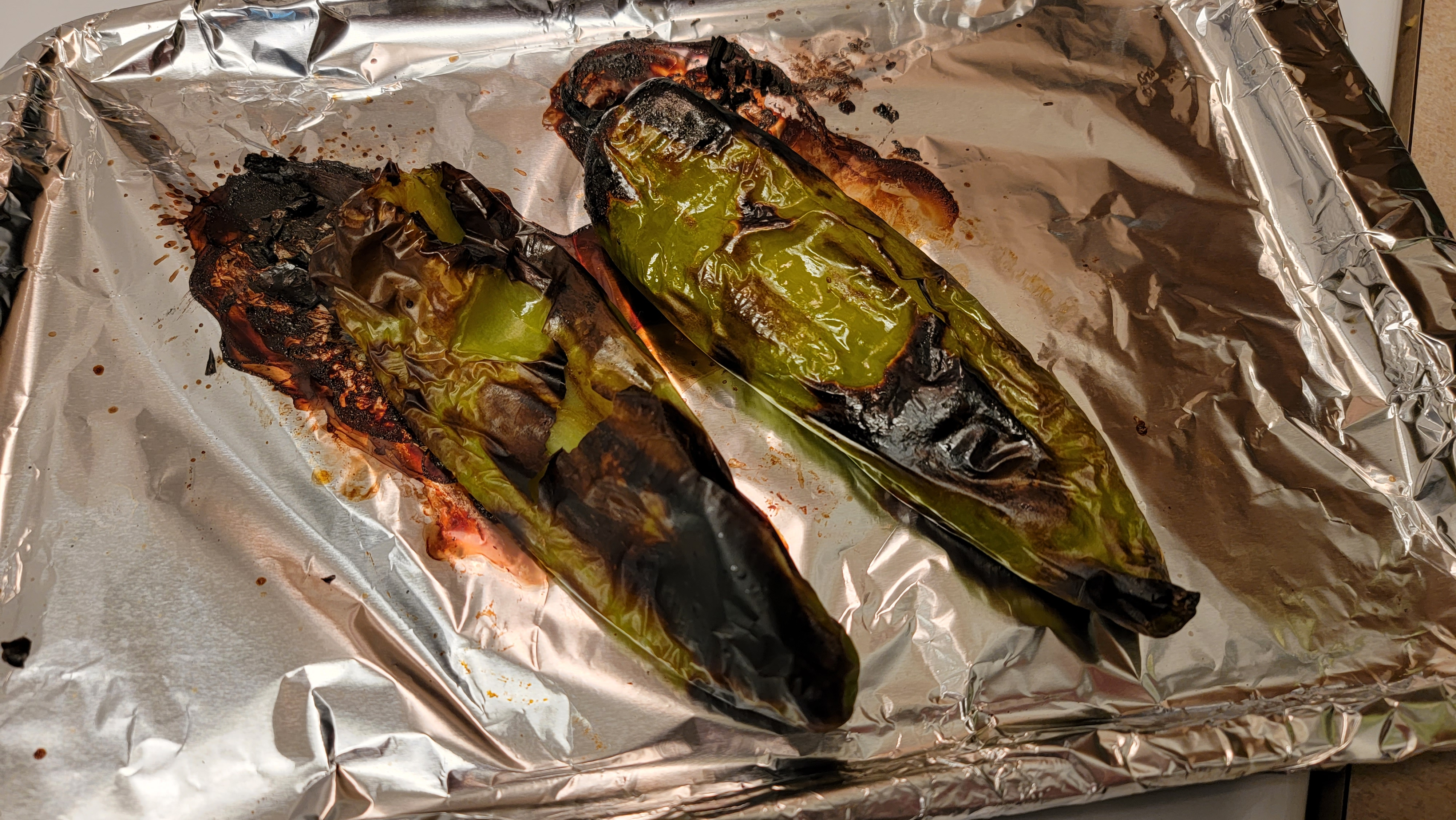Recreate New Mexico's Best Flavors On Your Stovetop
Sure, bell peppers and jalapeños are great, but these chiles rule the capsicum roost.
Pepper enthusiasts are something of a cult. But it's not all ghosts, scorpions, and flagellation of the tongue. For those seeking texture, flavor, and just the right amount of heat, there's another congregation: The Merciful Roasters of the Green Chile. And their holy land isn't in the Reaper fields of Carolina. It's a village covering three square miles in a southern county of New Mexico.
I'm talking, of course, about Hatch. Both the city and its surrounding valley are known the world over for their flavorful signature chile. These are the peppers I fell in love with over my years in the "Land of Enchantment." From burritos to burgers, Hatch chiles are a comforting presence on nearly every restaurant menu.
After moving away from the Southwest, I spent a long time trying to emulate its regional flavors. And while rural grocers in the South and Midwest may have a more limited selection of chile peppers, I've found that much of the craft lies in the preparation. Here, then, are a few ways to recreate the spells of New Mexico's magical plant.
How to select your chiles
If fresh Hatch chiles are unavailable in your region (and this is likely when the season is out), there are several viable alternatives. The Anaheim pepper is similar in appearance and taste—in fact, they're pretty much the same species—though its heat level is considerably lower than that of the Hatch. For spice-averse cooks, this widely sold alternative will be your best bet.
But here's a bit of sacrilege: I'm also a fan of the Poblano. It may not have the Hatch Valley glamor, but this chile is vibrant and meaty, and its wide skin was practically made for roasting. Each one can also be something of an adventure, as the spiciness can vary widely from pepper to pepper.
Whichever variety you choose, look for those with firm, glossy skin. And if your produce section is looking particularly sad and wrinkly, fear not—the older peppers can still be roasted.
How to roast, peel, and prep green chiles
Once you've washed and dried the peppers, it's time to get to the fire. If you don't have a large metal roasting tumbler around, fear not—your gas range, grill, or even a propane camp stove will work just fine. Turn on the flame and use metal tongs to place the chiles directly over the heat. Give them a few turns, then remove them once most of the skin has blackened and blistered. They'll hiss, crackle, and might smell like they're burned. Don't worry, they're not.
Some folks (myself included) aren't lucky enough to have a gas stove. In that case, fire up the broiler and place one rack at the very top of your oven. Arrange the chiles on a foil—lined tray and set them beneath the coil. Check them every minute or so, turning with tongs as necessary.
However you singe your peppers, place the fruits of your labor into a bowl and cover them with a kitchen towel for 10-15 minutes. This finishing step both steams the flesh and allows it to cool. Then snap on some gloves and get to peeling.
The charred skins should come away fairly easily, as should the seeds and internal membranes. But make no mistake, this is a messy process. You should resist the urge to rinse the peppers, as this will sluice away the tasty juices and oils that you've so carefully cultivated. Its okay to give your gloves a wash between peelings, but let the peppers be.
Don't worry if you don't get every last bit of charred skin stripped away. A stray piece here and there won't hurt anything, and they add a bit of visual charm to the finished dish. You can then cut the peeled chiles into strips, if you wish, but they're usually better served with a rough chop.

How to freeze and store green chiles
Here we come to one of the best parts about green chiles: their longevity. If you're not planning to use the roasted peppers right away, they'll keep in the freezer for up to a year. Make sure the peppers have cooled, and then dump them into an airtight container or freezer bag, removing as much air as possible before sealing. Some folks use ice cube trays, and that sounds fine, so long as you never plan to use that tray for anything else ever again.
Unfortunately, this process only works one way. Fresh peppers also freeze well, but don't try roasting the pepper once it's been frozen and thawed. I've tried this multiple times, and it simply doesn't work. You'll wind up with a watery, flaccid, and semi-steamed mess.
What to do with your bounty of green chiles
Aside from desserts, there aren't many dishes that can't be improved with the addition of green chiles. (Yes, I've seen those desserts—New Mexicans are delightfully insane.)
First thing's first: Green chiles belong on burgers. Pile them high, an emerald mountain atop the cheese. Now, I know it can be tempting to pile on every condiment in the fridge. But do yourself a favor, and let the chiles sing. Try a few bites with just the burger, the melted cheese, and the tangy zing of the peppers before deciding whether to add anything else.
Pizza is another natural medium. Scatter the roasted chiles between some pepperoni and sausage, and you'll have a hard time going back to plain old green peppers. Canned green chiles can also work here, in a pinch. Just be sure that you drain them first, so as not to turn your pizza soggy.
There are countless ways to incorporate roasted chiles into your breakfast. But for me, green chile sausage gravy takes the crown. Between browning the meat and adding the flour, toss in a handful of roasted peppers and their juice. Scoot them around, scrape up some of the sausage fond, and watch in horror as your gravy turns slightly green. But once you taste it over biscuits or in a burrito, you wouldn't care if it was the color of mud.

But these are all sidekick roles. If you're going to take one thing from these ramblings, make it this: Cook yourself some green chile stew. Despite the prominence of the meat, potatoes, and garlic, it's the chiles that shine through in this Southwestern mainstay. And like all such dishes, the recipe possibilities are endless. I got my start with this version, but feel free to experiment for yourself. I've enjoyed many iterations that swap in a combination of pork sausage and ground turkey.
If you're even remotely interested in things tangy and delicious, take a shot at searing your own chiles. I'm no expert in the field, but I certainly love eating them—and the fact that I'm willing to go through the extra steps of roasting and peeling when I could simply chop a fresh pepper serve as a testament to their excellence.




